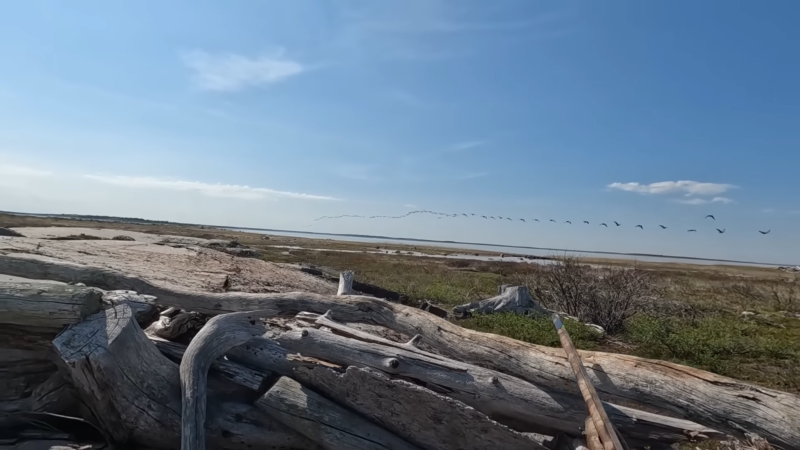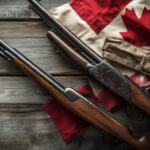Getting into goose hunting involves strategy, patience, and understanding a few fundamentals. Here’s a guide filled with practical tips to help you start on the right path and make your first goose hunt an experience to remember.
1. Choose the Right Blind for Concealment
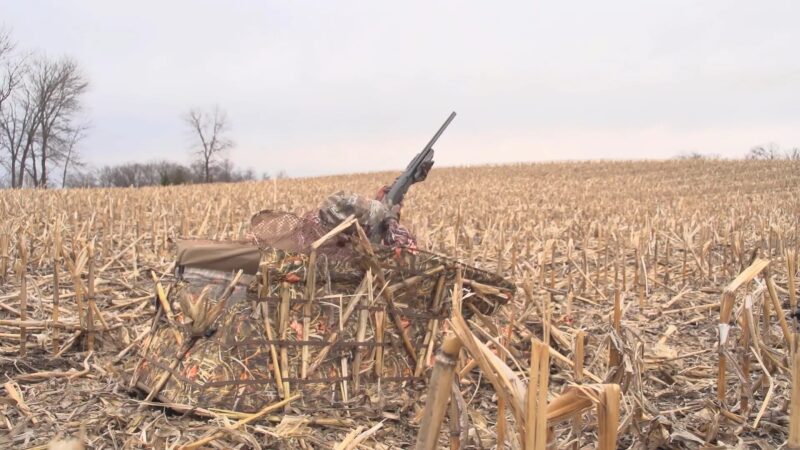
Being hidden from sight is essential in goose hunting. Geese are alert to any unusual movement, so finding the right blind can help you stay undetected.
Consider Different Blind Types
- Layout Blinds: Great for open fields, they let you lay low and stay hidden.
- A-Frame Blinds: These are upright blinds and work well in areas with natural cover, like tall grass or bushes.
- Natural Cover: If you prefer, use bushes, hedges, or tall grasses around you for concealment. Just ensure you’re fully hidden.
For a more effective setup, Divebomb recommends blending your blind with the environment by adding nearby vegetation. If you’re in a cornfield, try using some corn stalks around your blind to enhance camouflage.
2. Set Up Your Decoys Strategically
Decoys are key to getting geese to come close, but they need to be arranged well to be effective.
Use a U or V Pattern
A U or V shape with an open landing area works well for drawing geese in. Position the decoys to form an open zone where geese can feel comfortable landing, typically about 30-40 yards in front of your blind.
Adjust for Wind Direction
Wind direction plays a big role in decoy setup. Geese always prefer to land facing into the wind, so place your decoys accordingly. If the wind shifts, adjust your decoy layout to keep things natural.
3. Practice Goose Calling Techniques
You don’t need to know every call – start with the basics like the honk and cluck. A honk tells the geese that there are other geese around, while a cluck is softer and assures them everything is safe. With time, add more variety to your calling.
4. Adapt Your Strategy for Windy Days
View this post on Instagram
Wind direction impacts how geese approach your setup. Set your decoys so that geese can land facing into the wind, as they naturally do.
Position yourself and your blind downwind of your decoys, since that’s where the geese will likely aim for landing. On windy days, they’ll be cautious, so make sure your decoys and blind look natural and stable.
5. Remain Still and Keep Your Head Down
Geese have sharp eyesight and are quick to detect movement. Once geese are close, stay as still as possible, keeping your head low to avoid catching their attention.
Resist the temptation to “gawk” at the approaching flock, and trust your decoy setup and calling to do the work. When the moment’s right, raise your gun slowly to avoid spooking them.
6. Add Motion to Your Decoys
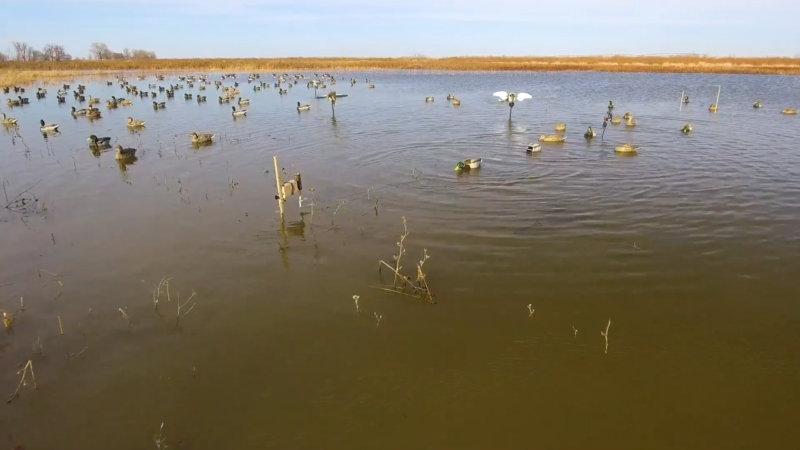
Incorporating motion into your decoy spread can make it more convincing. Flagging, or waving a black flag to mimic a goose’s wingbeat, is especially effective for attracting distant geese.
When geese are closer, a few motion decoys like a “floater” on a pole or wind-driven spinner can add subtle movement to your spread. Just avoid excessive movement – too much can look unnatural.
7. Mimic Geese Behavior in Cold Weather
In colder conditions, geese tend to huddle closer together and move less. Adjust your decoys to be in tighter groups when temperatures drop. Use fewer decoys to mimic a smaller, more cautious group, as larger spreads can seem unnatural when food is scarce or when geese are less active.
8. Use Flagging Instead of Calling in Fog
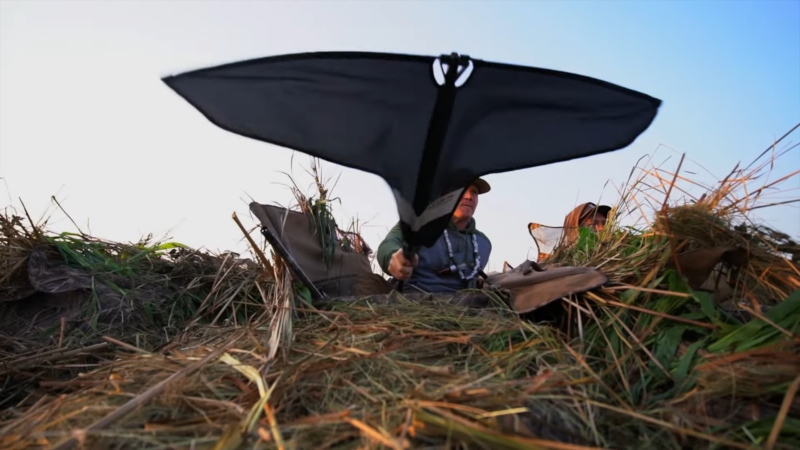
When visibility is low, such as on foggy mornings, calling can be less effective since geese may not be able to locate the sound’s origin. Instead, flagging can help them spot your location.
Light, regular flag movements can draw geese in even when visibility is poor. Once they get close enough, go back to softer calling if needed.
9. Combine Land and Water Decoys in Wetlands
If you’re hunting near water, try placing decoys both on land and in the water. This mixed spread can make your setup look more natural, as geese will often congregate near water to feed and rest. Place a few floaters near the water’s edge and land-based decoys around the shoreline to suggest a relaxed, secure group.
10. Use Decoy Placement to Communicate with Hunting Partners
This was a fairly predictable goose hunt, as we found them using a particular lake for several days. It was simply a matter of setting up a decoy spread and waiting.
Brenda & I both shot limits; but these were big birds &we could only hold up two each.
-Larry Potterfield pic.twitter.com/dCPFWtT2h8
— @MidwayUSA (@MidwayUSA) December 7, 2021
When hunting with a group, setting up decoys can double as a communication tool. For example, setting a small group of decoys on the far side of your spread can signal an approach path.
This way, all hunters know the expected flight path of incoming geese, reducing confusion and keeping everyone aligned on where the geese will likely land.
11. Practice Shooting in Realistic Hunting Conditions
Practicing shooting from different positions and angles in natural settings can improve accuracy when it counts. Try shooting from a seated or prone position, as you would in a layout blind, and get used to tracking birds in flight.
12. Make Your Setup Stand Out from Other Hunters
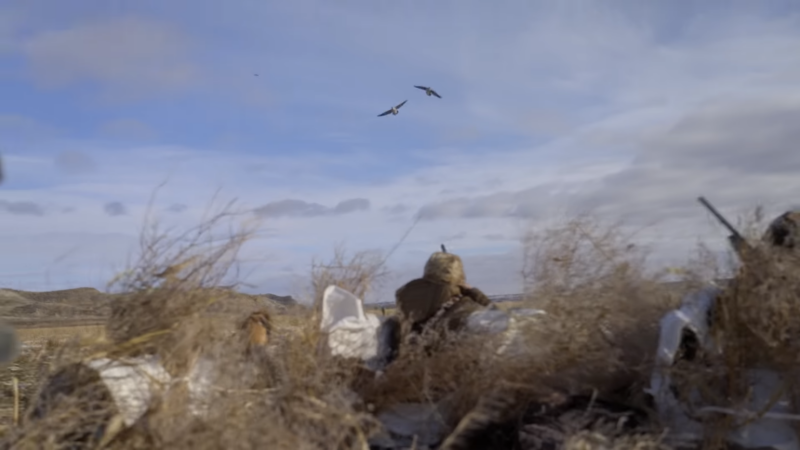
Geese often grow wise to similar-looking setups, especially in heavily hunted areas. Try mixing in different decoy poses or even fewer decoys to create a unique look. If everyone else is using large spreads, go smaller.
In Summary
By refining your approach with these specific tips, you can give yourself a strong edge in the field and help ensure a successful hunt. Each of these tactics not only improves your chance of success but also helps build skills that make the experience even more enjoyable. Good luck out there!

